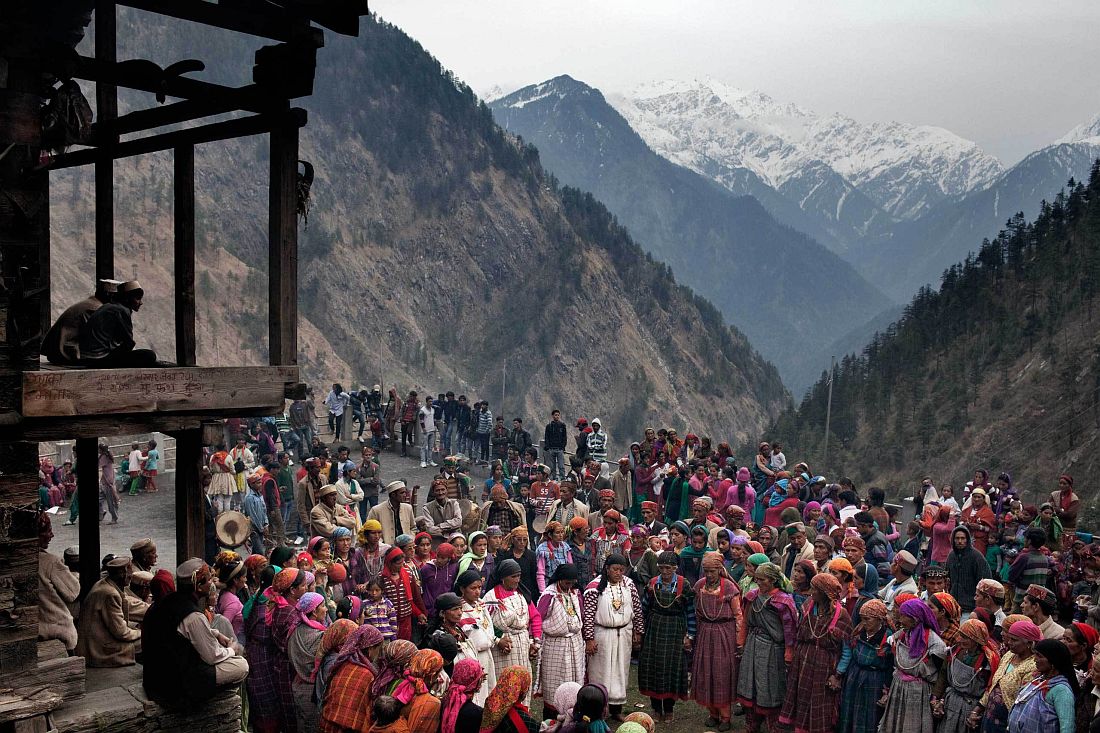A majestic vista unfolds as far as the eye can see. Tuscan hills, dappled with snow and caressed by wispy cloud, lie still and unending; our human presence but a fleeting dance in the epic duration considered by this timeless landscape.
How does one create a memory of such landscape, awe-inspiringly still, yet geologically speaking, rapidly changing and becoming? In 1764, Immanuel Kant described the phenomenon of encountering something sublime, for example seeing something large and powerful like a storm or a range of mountains. Kant believed the resulting feeling would be countered by one’s cognition, which ultimately resolved into a pleasant emotional surge. But it is more than pleasant, as Kant said, the sublime moves, the beautiful charms.
Albrecht Tübke’s compositions, however beautiful they may be, contain the ‘punctum’ of movement which seeks to update this timelessly construed sublime in the most contemporary of terms. Just when our perception of the landscape hovers on the cusp of memory, the embodiment of duration is shattered by the arrival of a flying object. Caught suspended in mid-flight, these planes are at various altitudes, flying dangerously low, vertiginously angled and disruptively still – how can they not be moving – arrested in mid- flight. The image Tübke presents holds multiple layers of duration, that of the instant where the plane zooms by, that of the gentle afternoon spent looking at the hills, the generations of mining being carried on in the quarry below, enveloped in the duration of the landscape itself, with tectonic shifts invisible through Tuebke’s shutter, yet rapidly changing in geological time.
Website: www.tuebke.info
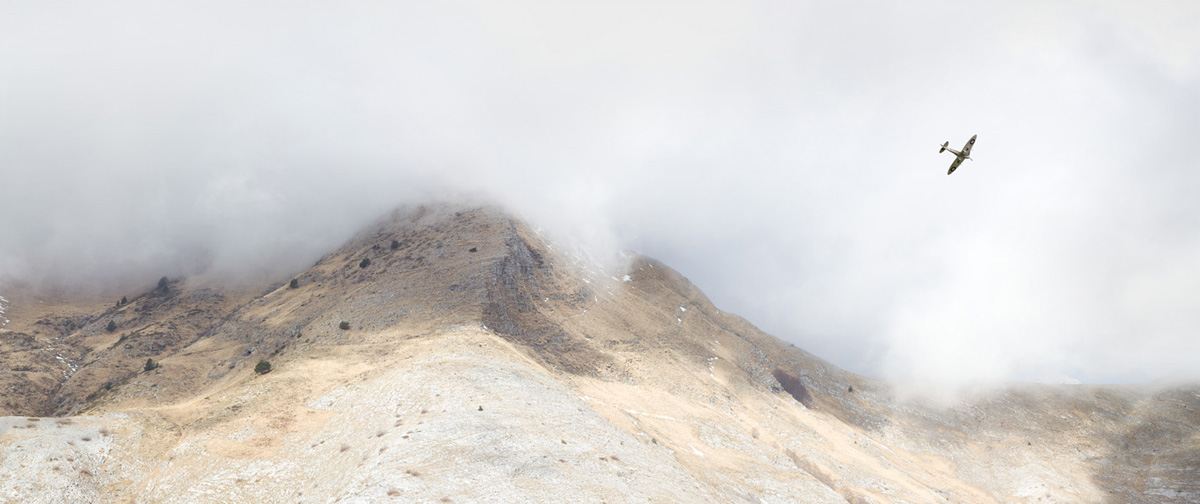


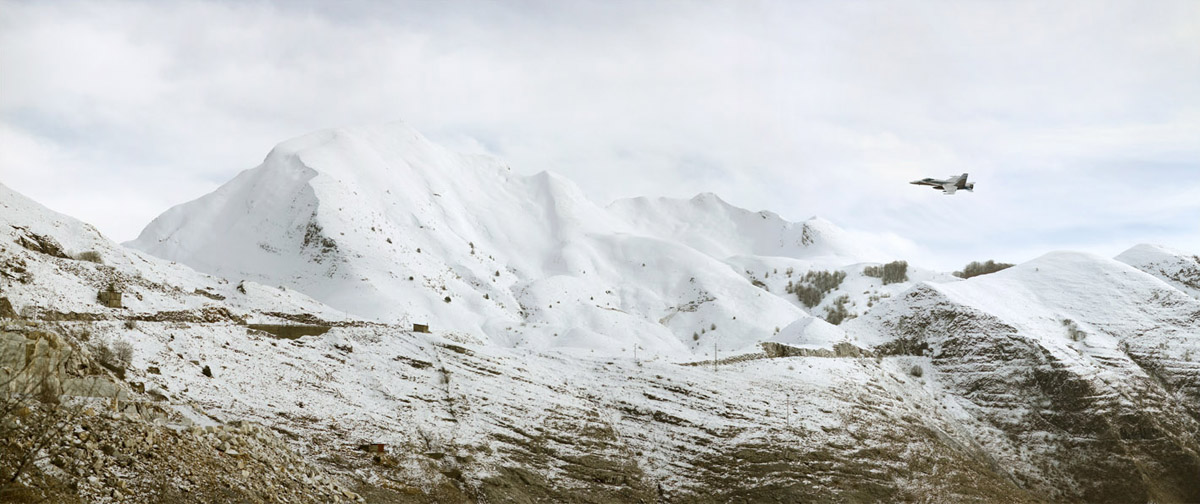
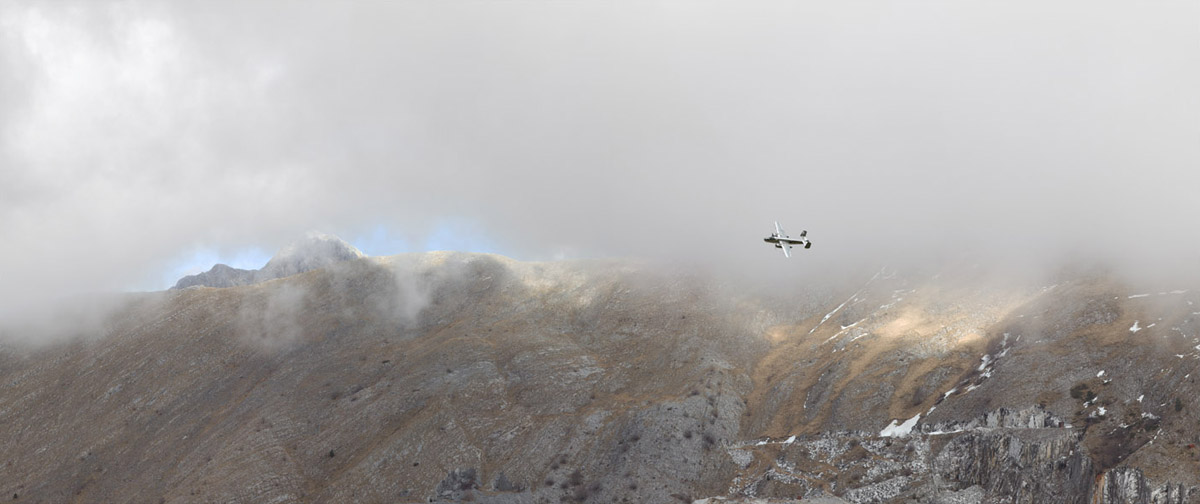
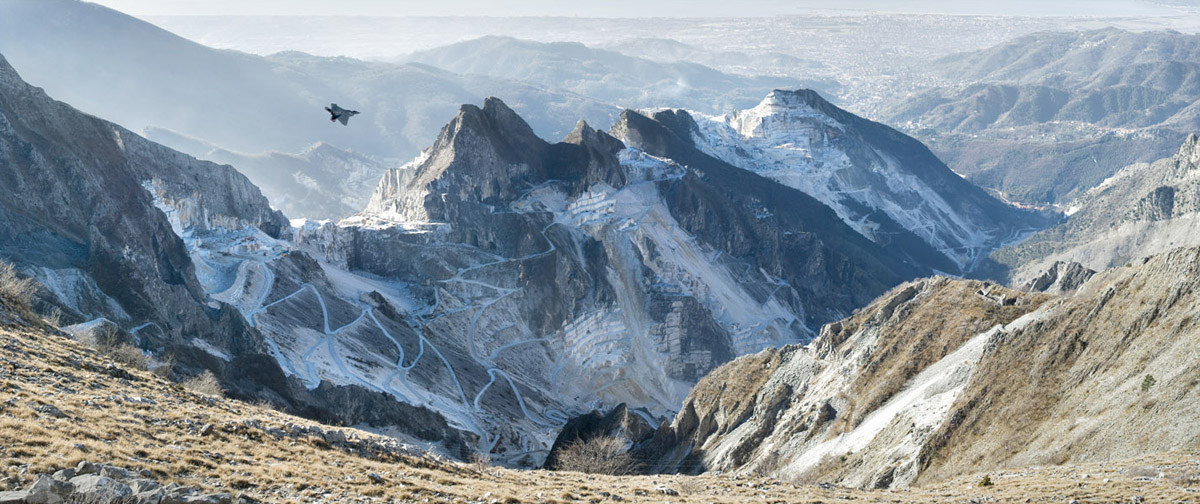
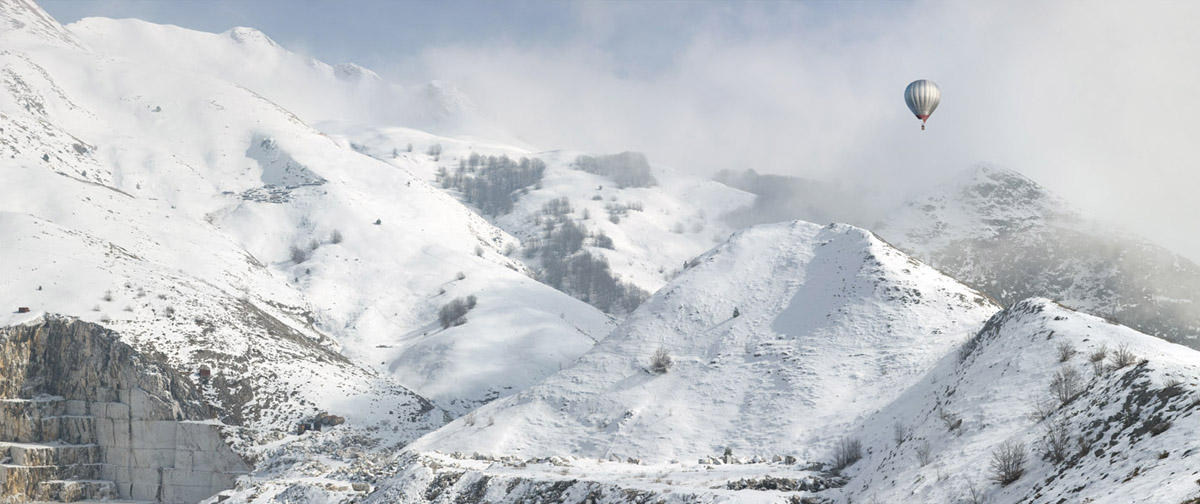
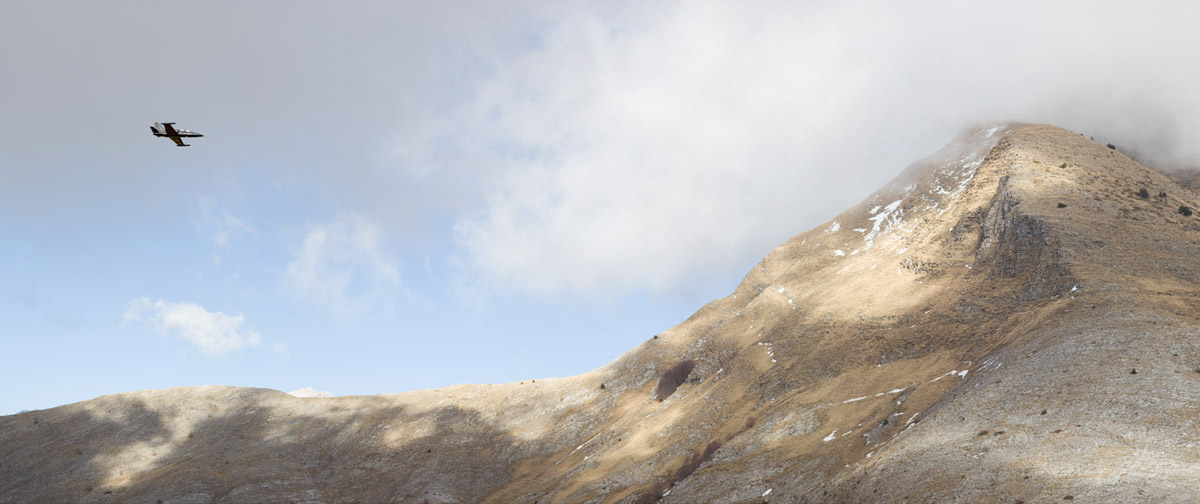
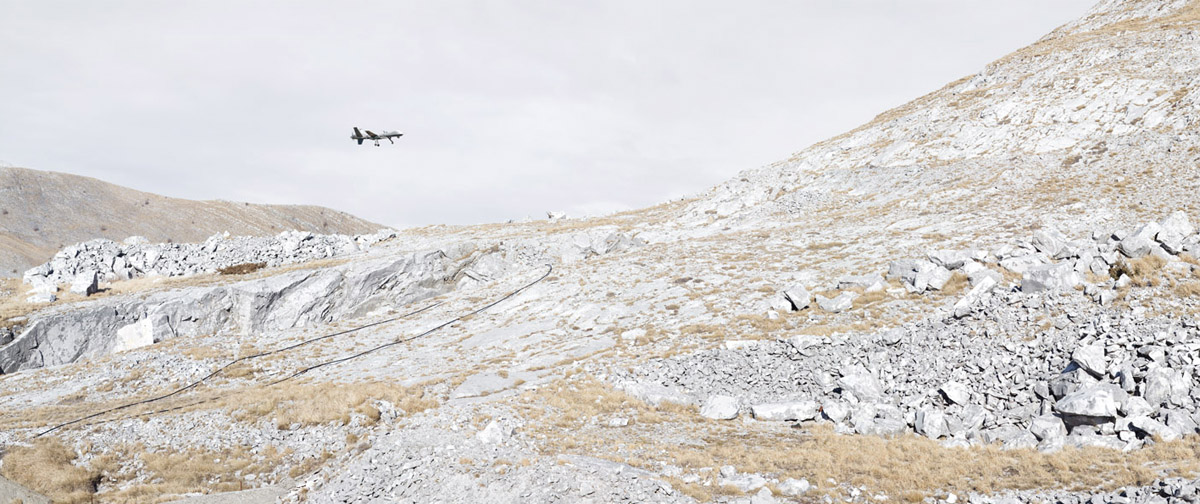
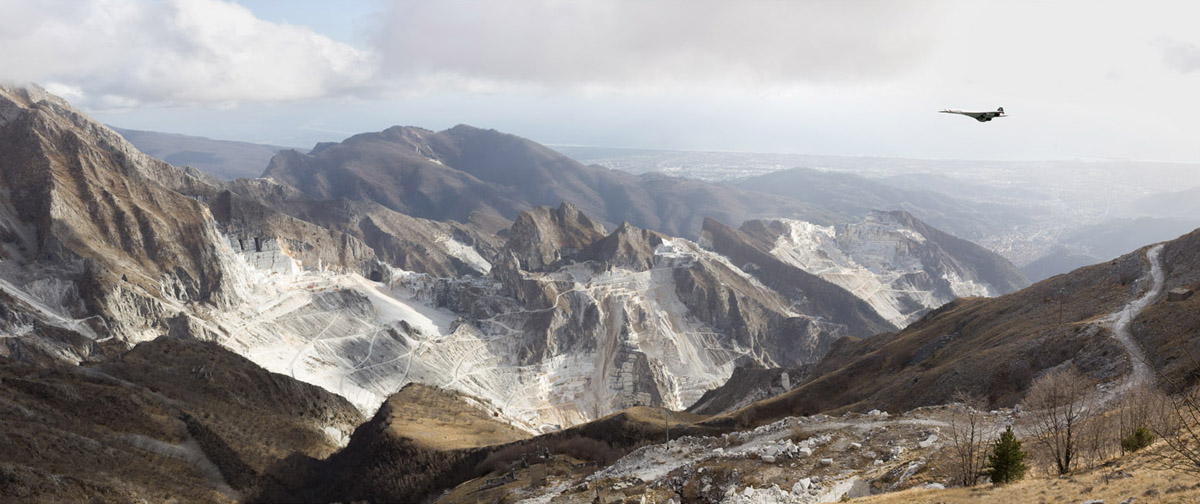
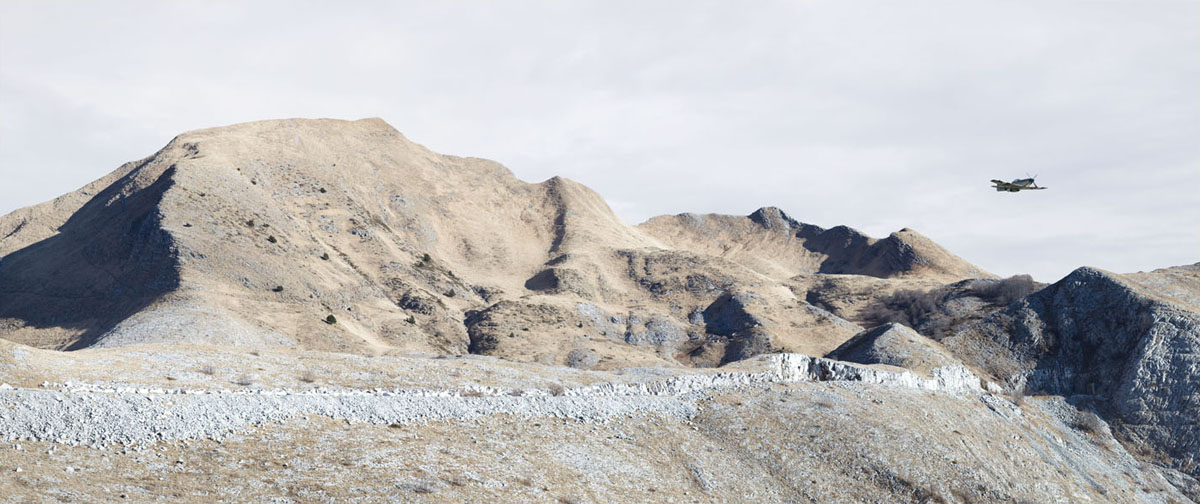

via: Submissions



